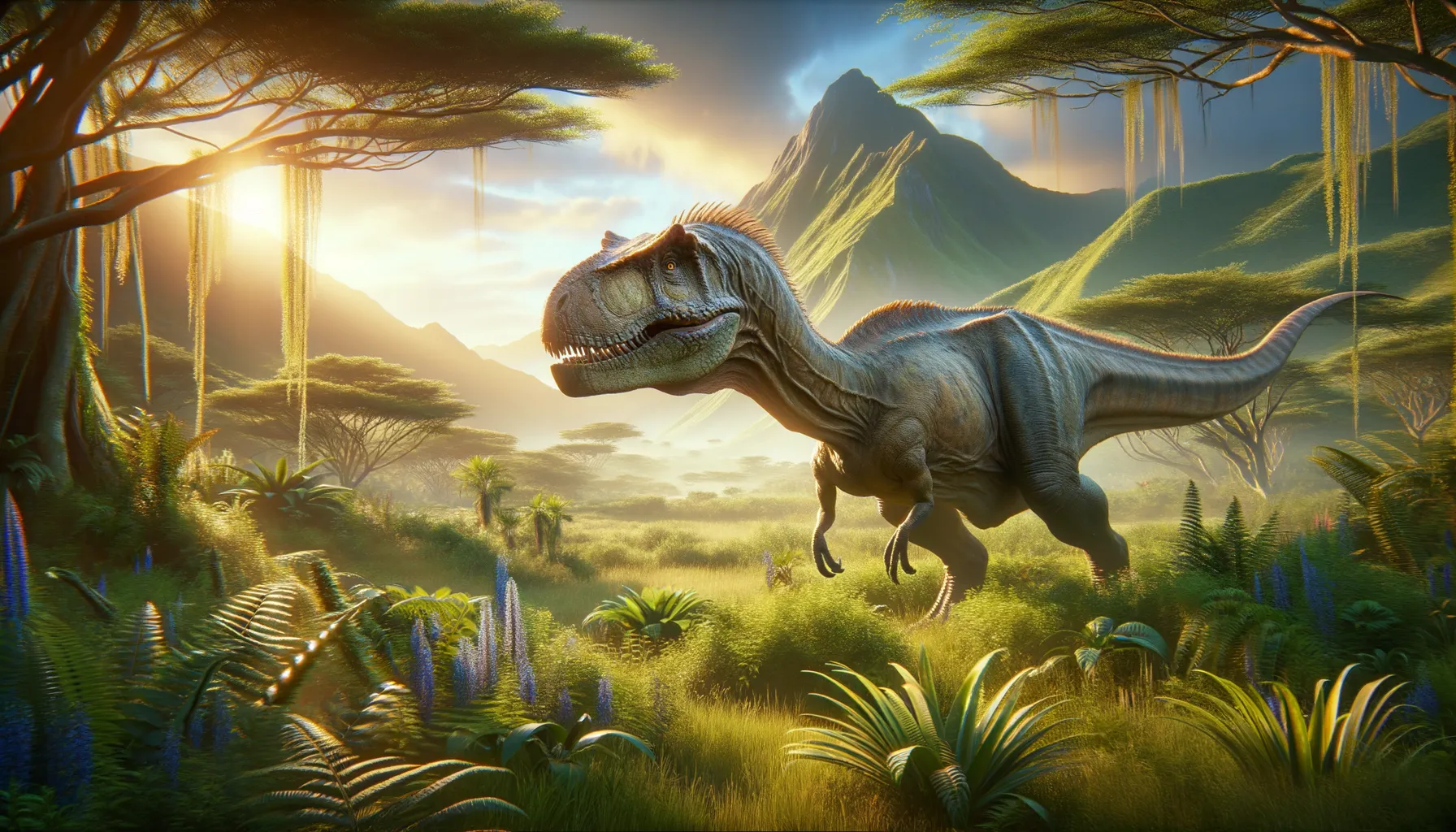
Protognathosaurus
Jurassic giant with a unique bite!
Period
Jurassic
Length
Approximately 20 feet from head to tail.
Height
About 6 feet tall at the hips.
Weight
Approximately 500 to 700 pounds.
Protognathosaurus was a medium-sized dinosaur from the Jurassic period, believed to have been a plant-eating species. Its fossils were first discovered in the rich paleontological sites of China. Known for its distinctive jaw structure, this dinosaur provides valuable insights into the evolutionary path of herbivorous dinosaurs. Its skeletal structure suggests it was well adapted to browsing vegetation at moderate heights, making it an important part of its ecosystem.
Diet
Protognathosaurus was primarily herbivorous, subsisting on a diet of cycads, ferns, and other low-lying plants. Its specialized teeth and jaw structure suggest it was adapted to grinding tough plant material efficiently.
Hunting
Rather than hunting, Protognathosaurus foraged and grazed in its environment, using its efficient digestive system to extract necessary nutrients from the dense vegetation.
Environmental challenges
Protognathosaurus faced several environmental challenges, including fluctuating climates and changing vegetation patterns. During dry periods, they needed to migrate to find adequate food sources. Predation from larger carnivorous dinosaurs also posed a significant threat, necessitating group behaviors for protection.
Speed
Moderate, similar to a medium-sized mammal.
Lifespan
Estimated to be around 20 years.
First discovery
Discovered in China in the early 20th century.
Fun Facts
- Protognathosaurus is a little-known dinosaur because it is known only from a single fossil jawbone.
- This dinosaur's name means 'primitive jaw lizard', reflecting its unique jaw structure.
- Protognathosaurus lived during the Late Jurassic period, about 160 million years ago.
- It was discovered in what is now China, indicating that area was once a habitat for diverse dinosaur species.
- Despite its early discovery, Protognathosaurus has not been assigned to any specific dinosaur family yet.
- The jawbone suggests that Protognathosaurus was likely a herbivore, feeding on plants.
- Due to limited fossil evidence, much about Protognathosaurus' appearance and behavior remains a mystery.
Growth and Development
Protognathosaurus juveniles hatched from eggs and grew rapidly during their early years to reach maturity and reduce vulnerability to predators. Their growth rate was influenced by external factors such as food availability and environmental pressures. Over time, they developed more robust limbs and specialized teeth to better access and process their plant-based diet.
Habitat
Protognathosaurus thrived in forested areas with abundant plant growth, providing ample foliage to feed on. These regions offered a mix of open meadows and dense underbrush, ideal for foraging. Rivers and lakes within these areas also presented crucial water sources, sustaining large herds of herbivores.
Interaction with other species
Protognathosaurus coexisted with a variety of other dinosaur species, ranging from fellow herbivores that competed for vegetation to carnivores that viewed them as prey. Symbiotic relationships with smaller creatures might have existed, helping them clean their skin and teeth. Flocking behavior helped them deter predators through group vigilance.
Natural lifespan
A natural lifespan of around 20 years is estimated for Protognathosaurus.
Reproduction
Protognathosaurus reproduced through laying eggs in nests built from vegetation and soil. These nests were typically located in secluded areas to protect against predators. Once hatched, the young were cared for by adults in the group, increasing their survival odds in the hostile Jurassic environment.
Social behaviour
Protognathosaurus exhibited social behavior, often living in herds that provided mutual protection against predators. Such group living not only enhanced their survival but also facilitated cooperative foraging. Communication within the herd was likely achieved through vocalizations and physical gestures.
Fossil locations
Fossils of Protognathosaurus have been primarily found in China, especially in areas known for rich Jurassic-era deposits. These sites have yielded a wealth of information about its structure and lifestyle. Further discoveries across similar sedimentary layers continue to provide insights into its existence.
